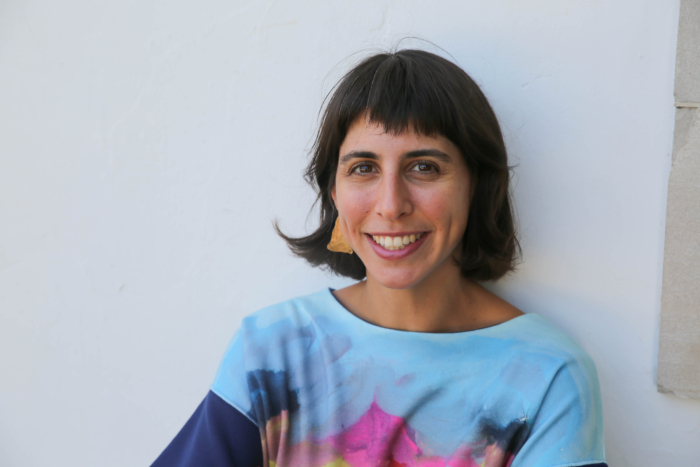
This fall, 11 new tenure-track faculty members joined Scripps College, including two at the W.M. Keck Science Department. As part of our ongoing series on Scripps’ faculty, the Office of Marketing and Communications recently sat down with Assistant Professor Carlin Wing, the first full-time tenure-track professor of media studies at Scripps.
Wing earned her AB in visual and environmental studies and social anthropology at Harvard University, her MFA in photography and media at California Institute of the Arts, and her PhD in media, culture, and communication at New York University. Her areas of interest include media and communication, science and technology, material culture, globalization, performance, disability, and play, games, and sport. She has exhibited her work nationally and internationally, and has published writing in Games and Culture, Public Books, Cabinet, Art Lies, and The Bulletin of the Serving Library.
Scripps College: As Scripps’ first full-time tenure-track professor of media studies, what are you looking forward to this year?
Carlin Wing: Top of the list of my priorities are: listening and learning a lot, integrating with the well-established Intercollegiate Media Studies program at Pitzer and the Department of Art at Scripps, and developing new courses, stemming from my background as an MFA and PhD that blend media theory and media history with artistic practice and media production.
SC: Scripps’ media studies tradition comes out of art, with professors Nancy Macko’s and Kim-Trang Tran’s classes serving as a nexus for film, digital, and critical studies and making the program one of our most popular majors. What would you want students to know about you as you add your background, experiences, and personality to the mix?
CW: I love teaching. I treat my work as an artist, a scholar, and a teacher symbiotically. Working as a teaching assistant in the Visual and Environmental Studies Department at Harvard made me realize that the classroom can be a generative place for my own art practice, and that played a big part in my decision to get an MFA in photography and media. I began to think about getting a PhD after teaching in art departments at Vanderbilt and Watkins and Harvard, partly because one of my projects had taken a historical and theoretical turn, but also because I developed a desire to teach historical and theoretical classes alongside and combined with practice-based courses. And, finally, I am really excited to return to my art community here in Los Angeles—I earned my MFA at California Institute of the Arts, and even though I have been living elsewhere for the past eight years, I have returned continuously to this community and its set of conversations.
SC: Your background as a professional squash player has undoubtedly also shaped your teaching! Tell us more about what students can expect, in terms of the “interactivity” of the courses you teach?
CW: My time playing squash translates into my teaching in many ways. I did a fair amount of coaching when I was competing full time, which offers a fairly direct analog to teaching. A less obvious but more important way in which it has shaped me as a teacher is the training in performance that it gave me. Being an athlete involves playing with others and performing in front of crowds. I have found this training incredibly useful for my teaching—I enjoy being in front of students and leading discussions. Squash is at its heart a game of to and fro—it offers a kind of physical model of a dialogue, a back-and-forth exchange. I understanding the acts of teaching and learning as both physical and intellectual endeavors, and I bring this understanding to my all of my classes.
Finally, my experience as an athlete has deeply influenced my research, which is, at its heart, a series of questions about bodies in motion. This research interest in turn shapes the kinds of classes that I hope to teach—classes about sport and games, bodies and technologies, digital rituals, histories of motion capture, elastic media, and so on.
I am teaching two classes this semester. Introductory Game Design is an analog class, which means that the materials will remain in the realm of paper, glue, chalk, markers, clay, and the like. We will divide our time between discussion of game genres and design principles, lab time for students to work on their games, and a group critique of each project. Students will be exploring topics like player relationships, rules, interaction, systems, chance, challenge, and so on.
Introduction to Digital Media Studies is a core class for the Intercollegiate Media Studies Department. I love teaching core classes because they are where the fundamental ideas of a discipline are first articulated to students. In the spring, I plan to teach an advanced version of this class that will go more in depth, training students to employ historical, ethnographic, and collaborative methods to research digital objects and environments.
SC: Is there a fact about yourself that is surprising, or that people don’t know about, that you’d like to share?
CW: I have photographed every ceiling that I have slept under since May 2005 for a project called Ceilings Where I Sleep. To date, there are over two hundred images in the project.

